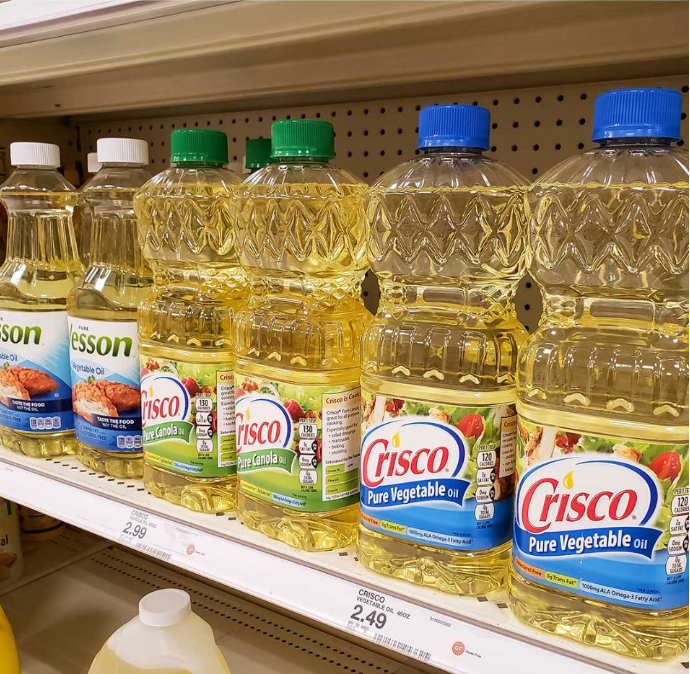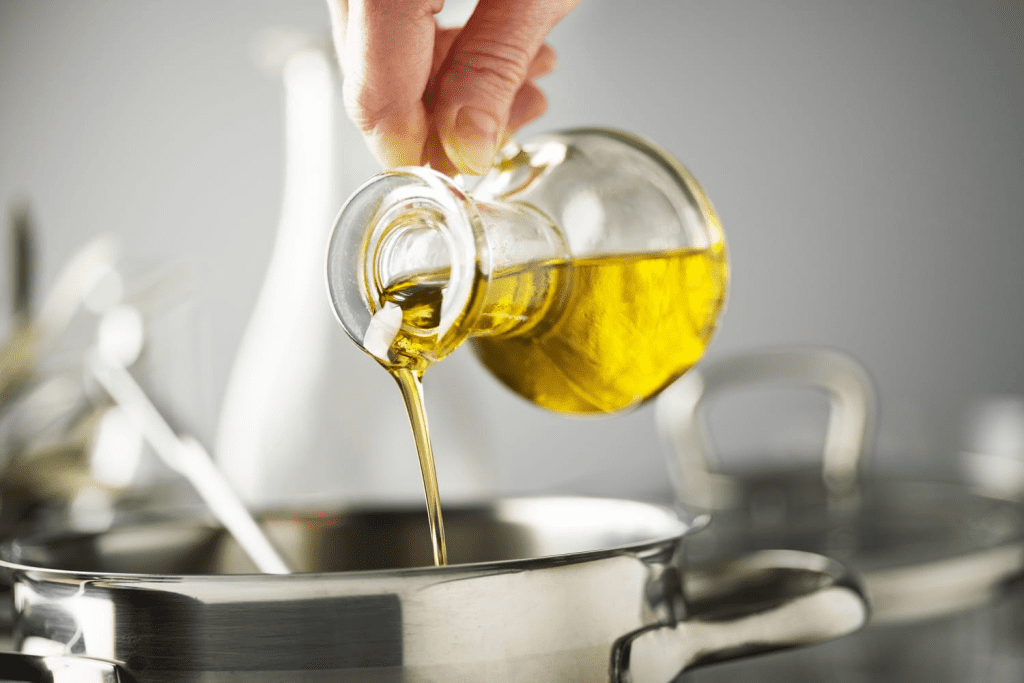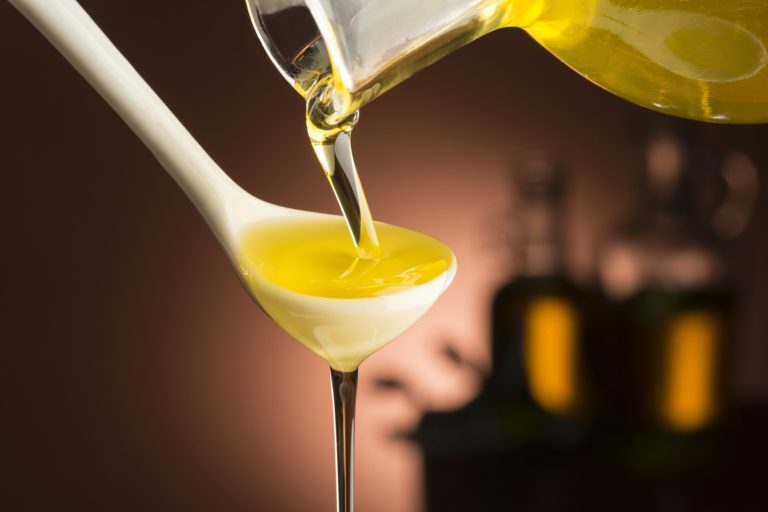Cooking oils play a significant role in our daily diets, but not all oils are created equal. My nana always stressed the importance of being picky with the oils we use in our kitchens. She had strong reservations about vegetable, canola, and corn oils, often pointing out their hidden health concerns. So, what’s the big deal about these oils? Let’s dive deep into why they might not be as healthy as they seem.
Understanding Vegetable, Canola, and Corn Oils

Vegetable, canola, and corn oils are everywhere—on grocery store shelves, in processed foods, and even in recipes that call for “neutral oil.” They’re loved for being affordable and versatile, but their widespread use doesn’t mean they’re the best choice.
- Vegetable oil: A generic term that often includes oils from soybeans, sunflower seeds, or other plant sources. It’s highly processed and usually rich in omega-6 fatty acids.
- Canola oil: Made from the seeds of the canola plant, a type of rapeseed, this oil is marketed as heart-healthy due to its low saturated fat content and moderate omega-3 levels.
- Corn oil: Extracted from the germ of corn kernels, this oil is popular for its mild taste and high smoke point, but it’s also a common ingredient in processed foods.
Despite their benefits, these oils can come with a host of health drawbacks.
The Problem with Omega-6 Fatty Acids
One of the biggest concerns with these oils is their high omega-6 fatty acid content. While omega-6 is an essential fat that our bodies need, the modern diet is overloaded with it. What’s the issue with too much omega-6? It can throw off the balance with omega-3 fatty acids, which are crucial for reducing inflammation and supporting brain health.
This imbalance has been linked to a variety of chronic conditions, including:
- Heart disease
- Obesity
- Diabetes
- Inflammatory disorders like arthritis
In short, relying heavily on oils like vegetable, canola, and corn can tip the scales toward a pro-inflammatory state in the body.
The Hidden Dangers of Oil Processing
Ever wonder how these oils make it to your kitchen? The production process often involves:
- High heat: Which can destroy beneficial nutrients and antioxidants.
- Chemical solvents: Like hexane, used to extract oil from the seeds.
- Bleaching and deodorizing: To improve appearance and smell but often at the expense of nutritional value.
These steps can introduce harmful compounds, such as trans fats, which are notorious for their links to heart disease and other health issues. The highly refined nature of these oils strips away anything good, leaving behind little more than empty calories and unhealthy fats.
Smoke Points: Not the Whole Story
Many people defend vegetable, canola, and corn oils for their high smoke points, which makes them ideal for frying or sautéing. While it’s true that these oils can handle high temperatures without burning, the fatty acids they contain may still oxidize and degrade when heated. This can release harmful free radicals—unstable molecules that damage cells and contribute to aging and disease.
Health Concerns Specific to Each Oil

Let’s break down the potential pitfalls of these commonly used oils:
- Vegetable oil: Often made from soybeans, it’s high in omega-6 fats and low in nutrients. Its processing can create trans fats, which are linked to heart disease.
- Canola oil: While lower in omega-6 than vegetable oil, it’s still predominantly made from genetically modified crops. Its refining process reduces its health benefits, despite marketing claims.
- Corn oil: High in polyunsaturated fats and omega-6 fatty acids, it’s also prone to oxidation, which can create harmful compounds. Most corn oil is derived from GMO corn, adding another layer of concern.
Healthier Alternatives to Common Cooking Oils
If these oils aren’t ideal, what should we be cooking with instead? Nana always swore by a few healthier alternatives that not only taste great but also pack a nutritional punch:
- Extra Virgin Olive Oil: Rich in heart-healthy monounsaturated fats and antioxidants, it’s perfect for low to medium-heat cooking or drizzling over salads.
- Coconut Oil: Although high in saturated fats, its unique composition makes it stable for high-heat cooking. Plus, it adds a delightful tropical flavor to dishes.
- Avocado Oil: With a high smoke point and plenty of monounsaturated fats, this oil is versatile and nutrient-dense.
- Ghee or Clarified Butter: A staple in Indian kitchens, ghee is rich in fat-soluble vitamins and has a delicious nutty flavor.
By swapping out processed oils for these wholesome options, you can improve your meals’ nutritional profile without sacrificing flavor or versatility.
The Big Takeaway: Balance is Key

At the end of the day, the best oil for cooking depends on what you’re making and your dietary needs. However, it’s clear that vegetable, canola, and corn oils have some serious drawbacks, from their high omega-6 content to the harmful effects of heavy processing. Instead of relying on these oils, try incorporating a mix of healthier fats into your diet.
My nana always said that what you cook with is just as important as the ingredients themselves. And you know what? She was right. A little bit of mindfulness when choosing oils can go a long way in supporting your health and wellness goals.
Conclusion: Rethink Your Cooking Oil Choices
Cooking oils aren’t just a medium for frying—they’re an integral part of your diet. While vegetable, canola, and corn oils are common kitchen staples, their potential health risks can’t be ignored. From promoting inflammation to introducing harmful trans fats, these oils might be doing more harm than good. By exploring healthier options like olive oil, coconut oil, or avocado oil, you can make a positive impact on your health without compromising on taste or functionality. So the next time you’re at the grocery store, think of my nana’s wise words and make a choice your body will thank you for.


